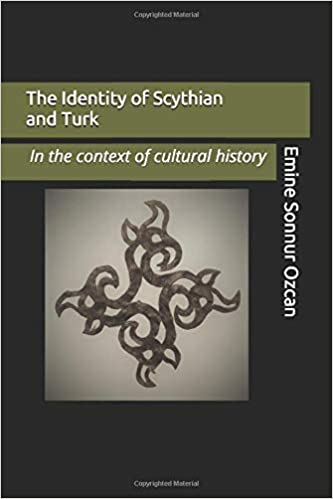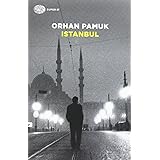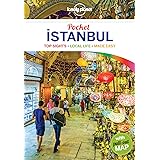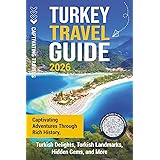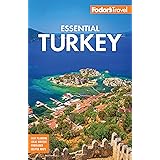by Dr. Emine Sonnur Özcan (Author)
Click here to buy the book
The Identity of Scythian and Turk in the Base of Cultural History
EMİNE SONNUR ÖZCAN
Copyright © 2020 Emine Sonnur Özcan
All rights reserved.
For Abu Rayhan Mohammad b. Ahmad al-Birûnî (973-1061)
INTRODUCTION
The main object of this research is “the Scythians” and “the Turks” from the earliest to medieval times: from a cultural history perspective, they can be regarded fundamentally similar. To provide evidence-based data for the argument, various aspects of the lifestyle typical of these nomadic communities, and their agglutinative language are going to be discussed in the study.
Throughout history, any group of people on the earth, need others to be identified and named. In this context, the first descriptions about features of the nomadic Scythians-Turks and their geographical region they lived in could go back to the resident communities in the areas inhabited by the Sumerians. People possessing Scythians and Turks features, and commonly classified as “Tûrânians” in the 19th century and early 20th century, were also referred to as “Martu”, “Subir”, “Elam”, “Turukku”, “Isquza” and “Sahi” in Mesopotamia, the recognized cradle of civilization. If we look at the Iranian world, the Scythians-Turks, with their language and lifestyle elements similar to the nomadic people of Mesopotamia, were called as “Tûr” or “Tûc”, “Turk”, “Tûrânî” and “Saka”. When we turn to the ancient Greeks, in their early sources we can find the description of the Scythians-Turks under the names of “Tauries” (people living in the Caucasus Taurus), “mare drinkers” (Hippemolgi), “the most righteous people” (Abii) and “Scythians”. The authors of the Roman period used to refer to those communities as “Scythae” and “Turcae”.
Among the names mentioned above –all of them will be addressed in more detail below– “Scythians” and “Turks” have been used for identifying the peoples who belong to horse-based nomadic culture the commonest and the longest. Thus, having in view that these two different names are used to denote almost the same cultural community, in this study, the unified term “Scythians-Turks” has been applied to provide more theoretical insight into the issue and harmonize further description.
Conflict and identity, as a kind of mirror of the societies in a broad sense, also mean a variety of existence. The history of the conflict “sedentarynomadic”, or of the people who reside in fortified cities and the mountain dwellers with their yurts and flocks leading a nomadic way of life, is as ancient as the history of the world: thus, the first known epic story Gilgamesh narrates about that kind of conflict. However, as the great scholar of Khwarezm Abu Reyhan al-Birunî (973-1061) claims, world civilization is shaped under the influence of diverse needs of people inhabiting the Earth in the course of evolution1. Accordingly, the author of this study believes that any “delusion of grandeur” to “others” within any community is limited throughout history in time, space and belongingness. The most likely distinctive feature establishing the superiority of one society over others and ensuring the continuity of life as such is respect for nature and harmonious coexistence with it.
1 Shlomo Pines, Tuvia Gelblum, “Al-Bīrūni and Patañjali”, Bulletin of the School of Oriental and African Studies, vol. 29, no. 2, 1966, p. 302.
Emine Sonnur Özcan
CONTENTS
INTRODUCTION…………………………………………………………………………………. vii
SCYTHIANS-TURKS IN EARLY MESOPOTAMIAN SOURCES………. 1
- Nomad Warrior People in Mesopotamia and the Scythians-Turks………… 1
a.1. The Martus…………………………………………………………………………………………. 6
a.2. The Subirs…………………………………………………………………………………………. 9
a.3. The Elamites………………………………………………………………………………………13
a.4. The Turukkeans…………………………………………………………………………………15
a.5. The Kingdom of Mari Terqa and Khana……………………………………………17
Bibliography……………………………………………………………………………………………..20
SCYTHIANS AND TURKS IN MEDIEVAL WRITTEN SOURCES:
SIMILARITY IN LIFESTYLE ……………………………………………………………….24
- a. Geographical and political division in the ancient world ………………….24
- The division of Seven Climates (Climes)………………………………………………………..25
- The division of Faridûn…………………………………………………26
- The division of the Prophet Noah ………………………………………………………………..27
- The division of the Greeks ………………………………………..27
- The division of Hermes……………………………………………………………………..28
- The division of the Indians………………………………………………………….29
- b. The Scythians/Sakas/Turks in Persian and Assyrian Sources………………………..31
b.1. The Sakas/Turks in Persian Sources…………………………………………………………..31
b.2. The Scythians/Sakas in Assyrian Sources …………………………………………………..40
b.3. Cultural uniformity of the Scythians-Turks in Ancient Greek, Roman,
Chinese Sources ……………………………………………………………………………………….42
b.3.1. The Tauri Scythians………………………………………………………………………..51
b.3.2. The Scythians as barbaric communities…………………………………………..55
THE SCYTHIAN-TURKIC SIMILARITY: FINDING COMMON
GROUND IN ANCIENT SOURCES ……………………………………………………57
THE IDENTITY OF SCYTHIAN AND TURK
v
III. a. Warlike people who avoided wars: simplicity, bravery and honesty..57
III. b. Scythian-Turkic clothing ………………………………………………………………..74
III. c. Felt………………………………………………………………………………………………….77
III. d. Scythians-Turks’ dwelling: wagons-houses……………………………………..80
III. e. Scythian-Turkic alimentary tradition and culture: main nutrition
elements……………………………………………………………………………….84
III. e. 1. Millet (dari) …………………………………………………………………………………84
III. e. 2. Horse, Mare’s milk, kumis (koumiss), and meat………………………….86
III. e. 3. Scythian and Turkic women: freedom and equal rights in the
community …………………………………………………………………….97
Bibliography……………………………………………………………………………………………109
THE OLD-NEW TESTAMENT AND THE QUR’AN ABOUT GOGMAGOG AND THE SCYTHIANS-TURKS ……………………………………….116
- Old Testament and Gog-Magog …………………………………………………………118
- Gog and Magog in the New Testament……………………………………………….121
- Ya’juj and Ma’juj in the Islamic sources……………………………………………….123
- The Perception of Scythian-Turkiс Identity in the Late Middle Ages.………..144
CONCLUSION:…………………………………………………………………………………….154
“Volatile course” of monographic studies………………………………………………154
on the Scythians …………………………………………………………………………………154
Bibliography……………………………………………………………………………………….157
Emine Sonnur Özcan
LIST OF IMAGES
Image 1. Trilingual inscription of Darius at Behistun p. 37
Image 2. An Amazon throwing a lasso p. 65
Image 3. A miniature, which depicts using lasso by the Turks in a war area p. 66
Image 4. “Head of Cyrus brought to Tomyris” p.101
LIST OF MAPS
Map 1. The Babylonian Map of the World p. 2
Map 2. Mesopotamia Circa 2500-1000 BC p. 18
Map 3. Al-Birunî’s Seven Climates p. 26
Map 4. The geographic division of ancient world according to Feridûn p. 27
Map 5. The geographic divisions of ancient world according to the Greeks p. 28
Map 6. The Persian division of Hermes p. 29
Map 7. The division of Indians p. 30
Map 8. The geography of the regions where three peoples – Scythian/Saka/Turkic-lived in the era of Darius I p. 39
Map 9. The Scythian land in the North of the Black Sea according to Herodotus p. 43
Map 10. Scythia within (to the west of) the Imaus (Himalaya) mountains, (Ptolemy, 7th map) p. 49
Map 11. Scythia beyond (to the east of) the Imaus mountains, (Ptolemy, 8th map) p. 50
Map 12. Ancient Greece and the Taurians/Scythians on the North of the
Black Sea p. 54

